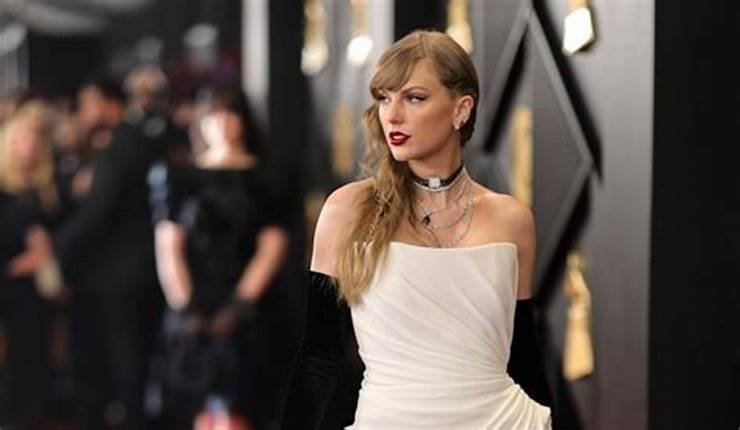( aesthetic:qgijenkfgs4= taylor swift ) Taylor Swift’s aesthetic during her early career was heavily rooted in her country music origins. When she first burst onto the scene with her debut album Taylor Swift in 2006, she was known for her long, blonde curly hair, sundresses, and cowboy boots. This youthful, country-inspired look resonated with her fans and perfectly matched the themes of her early music, which focused on small-town life, love, and heartache.
2. Innocence and Youthful Charm
( aesthetic:qgijenkfgs4= taylor swift ) In her early years, Swift’s aesthetic was defined by innocence and simplicity. She was the picture of a girl-next-door, often appearing with minimal makeup and a soft, approachable demeanor. This wholesome image, combined with her relatable songwriting, helped her quickly build a fanbase, particularly among teenage girls. Her music videos from this era, such as “Tim McGraw” and “Teardrops on My Guitar,” reflected this aesthetic with soft lighting, natural landscapes, and romanticized imagery.
3. Fearless Era: Glamorous, Yet Grounded
( aesthetic:qgijenkfgs4= taylor swift ) With the release of her second album, Fearless (2008), Taylor’s aesthetic began to shift slightly. This era saw her leaning more into glamorous looks, often incorporating sequins, sparkles, and flowing gowns into her wardrobe, particularly in her stage performances. Her golden curls became a signature part of her image, symbolizing her transition from a country artist to a crossover star.
4. Embracing Fairy Tale Aesthetics
( aesthetic:qgijenkfgs4= taylor swift ) During the Fearless era, Taylor Swift embraced a fairy tale-like aesthetic, which was most evident in her music videos for songs like “Love Story” and “You Belong with Me.” These visuals often featured elements like castles, flowing dresses, and soft, romantic lighting. This ethereal and dreamy aesthetic became a key part of her identity during this period, as she positioned herself as a hopeless romantic in both her music and visuals.
5. The Red Era: A Bold Transformation
( aesthetic:qgijenkfgs4= taylor swift ) The release of Red in 2012 marked a turning point for Swift’s aesthetic. This era saw her experimenting with a bolder, more mature look. The signature element of this period was, of course, her bold red lipstick, which became an iconic part of her image. Taylor began to wear more sophisticated and fashion-forward outfits, moving away from her country roots and embracing a more cosmopolitan, pop-oriented aesthetic.
6. Fashion Evolution: From Sundresses to High Fashion
( aesthetic:qgijenkfgs4= taylor swift ) Throughout her career, Taylor Swift’s fashion choices have evolved significantly. While she started with sundresses and cowboy boots, by the Red era, she was stepping out in designer dresses, sleek trousers, and tailored suits. Her move toward high fashion was symbolic of her growing confidence and maturation as an artist. She became a regular on the best-dressed lists at award shows and fashion events, solidifying her status as a style icon.
7. Iconic Red Lipstick and Vintage Vibes
( aesthetic:qgijenkfgs4= taylor swift ) The Red era also saw Swift incorporating vintage elements into her aesthetic. She embraced retro-inspired fashion, often seen in polka dots, high-waisted shorts, and cat-eye sunglasses. Her red lipstick became a symbol of this era, adding a timeless, classic touch to her evolving style. This aesthetic shift aligned with the more emotionally complex themes of her music, as she explored the highs and lows of love with a newfound maturity.
8. The 1989 Era: Full Pop Transformation
( aesthetic:qgijenkfgs4= taylor swift ) The release of 1989 in 2014 was a monumental moment in Taylor Swift’s career, marking her full transition from country to pop. This era was characterized by sleek, modern fashion choices, including crop tops, matching sets, and edgy streetwear. She traded her curls for a sleek, straight bob, signaling a shift toward a more polished, metropolitan aesthetic. The music videos from this era, such as “Shake It Off” and “Blank Space,” showcased her versatility, blending high fashion with playful, avant-garde visuals.
9. Embracing the City Girl Aesthetic
( aesthetic:qgijenkfgs4= taylor swift ) In the 1989 era, Swift fully embraced a “city girl” aesthetic. Her style reflected the urban sophistication of someone living in New York City, which she often referenced in her lyrics. She became known for her chic street style, often photographed wearing trendy outfits while walking through the streets of Manhattan. Her aesthetic during this period was a reflection of her personal growth, symbolizing her independence and maturity.
10. Music Videos as High Art
( aesthetic:qgijenkfgs4= taylor swift ) The 1989 era also saw Swift’s music videos becoming more elaborate and cinematic. The video for “Blank Space,” in particular, became iconic for its high-fashion, surrealist aesthetic. Shot in a grand mansion, the video featured Swift in designer gowns, embodying a femme fatale persona. This marked a shift toward a more theatrical and visually ambitious approach to her artistry, where the aesthetic of her music videos became just as important as the music itself.
11. The Reputation Era: Dark and Edgy
( aesthetic:qgijenkfgs4= taylor swift ) With the release of Reputation in 2017, Taylor Swift took her aesthetic in a completely new direction. Gone were the soft pastels and romantic visuals of her earlier work. Instead, this era was defined by a darker, edgier aesthetic, with Swift often seen in black leather, bold makeup, and striking, high-contrast visuals. The snake became a key symbol during this time, representing her response to media controversies and personal betrayals.
12. Gothic Glamour and Rebellion
( aesthetic:qgijenkfgs4= taylor swift ) The Reputation era embraced gothic glamour, with Swift donning dramatic black outfits, heavy eyeliner, and slicked-back hairstyles. This aesthetic was a stark contrast to her previous, more wholesome image. The music videos for songs like “Look What You Made Me Do” and “…Ready for It?” were filled with dark, futuristic visuals, symbolizing her rebellion against the media narrative that had surrounded her.
13. Aesthetic Symbolism in Reputation
( aesthetic:qgijenkfgs4= taylor swift ) During the Reputation era, symbolism played a significant role in Taylor’s aesthetic. The snake, in particular, became a recurring motif, symbolizing both her critics and her own power to reclaim the narrative. This era saw Swift using visual storytelling to address themes of revenge, rebirth, and empowerment. The aesthetic was bold, unapologetic, and perfectly matched the themes of the album.
14. The Lover Era: A Return to Whimsy and Romance
( aesthetic:qgijenkfgs4= taylor swift ) The release of Lover in 2019 marked yet another shift in Swift’s aesthetic. After the dark and intense Reputation era, Lover brought back a sense of lightness, whimsy, and romance. The aesthetic was filled with pastel colors, floral patterns, and heart-shaped imagery. Swift returned to a more romanticized version of herself, but this time with a newfound sense of maturity and self-awareness.
15. Soft, Dreamy Aesthetic of Lover
( aesthetic:qgijenkfgs4= taylor swift ) The Lover era was defined by a soft, dreamy aesthetic. Swift often wore flowing dresses in pastel shades, and her makeup was lighter and more natural. The visuals from this era, including the music videos for “ME!” and “You Need to Calm Down,” were filled with rainbows, sparkles, and playful imagery. This aesthetic aligned with the themes of love, hope, and unity that ran through the album.
16. Collaborations with Fashion and Art
( aesthetic:qgijenkfgs4= taylor swift ) Throughout her career, Taylor Swift has collaborated with a variety of fashion designers and visual artists to craft her aesthetic. From her partnership with brands like Stella McCartney during the Lover era to her collaborations with directors like Joseph Kahn for her music videos, Swift has consistently worked with creative professionals to push the boundaries of her visual identity.
17. The Folklore and Evermore Era: Cottagecore Aesthetic
In 2020, Swift surprised fans with the release of Folklore and Evermore, two albums that marked a dramatic shift in both her music and aesthetic. These albums embraced a more stripped-down, acoustic sound, and the visuals matched this change. Swift’s aesthetic during this time was heavily influenced by the cottagecore trend, featuring rustic, nature-inspired imagery and soft, muted tones.
18. Earthy Tones and Minimalism
The Folklore and Evermore albums were accompanied by an aesthetic that embraced minimalism and natural beauty. Swift was often seen in cozy sweaters, plaid jackets, and soft, earth-toned fabrics. The music videos and album artwork featured outdoor landscapes, including forests, fields, and lakes, reflecting the introspective and nature-oriented themes of the music.
19. Return to Authenticity and Simplicity
This era was a return to authenticity for Taylor Swift, both in her music and her aesthetic. The simplicity of the visuals matched the introspective nature of the songs, which explored themes of isolation, nostalgia, and storytelling. This aesthetic shift showed a more vulnerable and grounded side of Swift, one that resonated deeply with fans during the uncertainty of the global pandemic.
20. Personal Style: From Glamour to Comfort
As Taylor’s music evolved, so did her personal style. While she embraced high fashion during her 1989 and Reputation eras, the Folklore and Evermore periods saw her leaning into more comfortable, cozy clothing. This shift mirrored the themes of simplicity and introspection that defined these albums. Swift’s personal aesthetic became more accessible and relatable, connecting her with fans on a deeper level.
21. The Re-Recording Project: Revisiting Past Aesthetics
In 2021, Taylor Swift began re-recording her early albums as part of her effort to regain control of her masters. This project allowed her to revisit the aesthetics of her past eras while incorporating her current, more mature perspective. With each re-release, Swift has infused nostalgia with fresh visuals, blending the old with the new.
22. Taylor’s Aesthetic Influence on Fans
Swift’s aesthetic choices have had a significant influence on her fans, many of whom have adopted elements of her style in their own lives. From recreating her iconic red lipstick look to embracing the soft, cottagecore vibes of Folklore, Swifties have consistently mirrored their idol’s aesthetic. Taylor’s ability to influence fashion trends and cultural moments has solidified her status as both a musical and style icon.
23. Swift’s Aesthetic Legacy
Over the years, Taylor Swift has built a rich aesthetic legacy that will be remembered for decades to come. Her ability to reinvent herself with each album, while staying true to her core identity, is one of the reasons she has remained relevant in the ever-changing world of music and fashion. Each era of her career represents a different facet of her personality and artistry, contributing to a visual journey as dynamic as her musical one.
24. Taylor Swift and Cultural Aesthetics
Taylor Swift’s aesthetic has not only influenced her fans but has also had a broader impact on cultural aesthetics. Whether it’s the rise of cottagecore during the pandemic or the resurgence of bold, vintage fashion trends in the early 2010s, Swift’s style choices have often aligned with or even led larger cultural movements. Her role as both a trendsetter and a reflection of societal shifts is a testament to her influence.
25. The Future of Taylor Swift’s Aesthetic
As Taylor Swift continues to evolve as an artist, it’s likely that her aesthetic will continue to shift as well. Whether she returns to more glamorous visuals, embraces the simplicity of her Folklore era, or creates an entirely new aesthetic, one thing is certain: Swift’s visual identity will remain as integral to her artistry as her music. Fans eagerly await the next chapter in her ongoing aesthetic evolution, knowing that whatever comes next will be a reflection of the multifaceted artist she has always been.
In conclusion, Taylor Swift’s aesthetic journey is a testament to her versatility as both a musician and a visual artist. From her country roots to her pop superstar status, and her recent dive into introspective, indie-inspired visuals, Swift has continually reinvented her style to match the themes and emotions of her music. Her aesthetic evolution not only highlights her growth as an artist but also underscores her ability to resonate with fans on a visual and emotional level.







